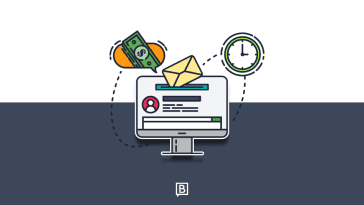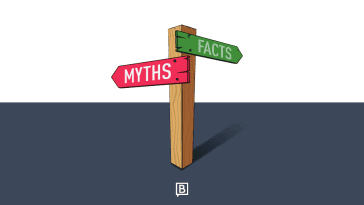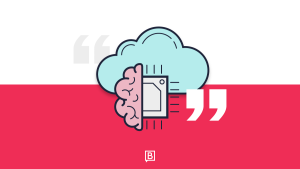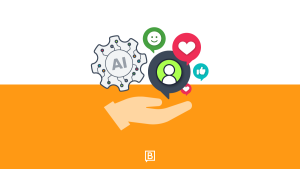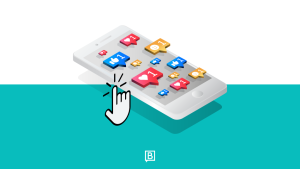When’s the last time you called a brand to make a complaint? (I know, right?!) Digital platforms have transformed how businesses interact with their audiences.
Today, omnichannel customer service is the gold standard, enabling seamless experiences across multiple touchpoints.
To keep pace with customer expectations, CX teams must rethink their strategies and adopt an omnichannel approach that prioritizes both digital and social channels.
In this article, we’ll explore why omnichannel customer service is essential for modern businesses, how CX teams can adapt, and actionable steps to implement a robust strategy.
What Is Omnichannel Customer Service (and Why It’s Not Just a Buzzword)
Omnichannel customer service isn’t just “being everywhere.” It’s showing up consistently — with context — across every touchpoint your customer chooses.
Whether someone starts with a tweet, jumps to live chat, and finishes in your inbox, they should never have to repeat themselves. That’s omnichannel done right.
It’s the difference between:
“Ugh, I already told you this…”
vs.
“Wow, that was easy! Thank you!”
Why Omnichannel CX Actually Matters
1) Customer-Led Convenience
Let your customers pick the platform! We call this a customer’s “channel of choice.” And it could be anything from TikTok DMs, Instagram comments, email, to good old-fashioned phone calls. Meet them where they are, not where your org chart says they should be.
2) Smarter, Faster Resolutions
With unified systems and shared context, your team can jump in fast. In essence, no copy-pasting case notes or starting from scratch. (Please. Don’t.)
3) Loyalty That Lasts
Friction-free = forget-me-not. A seamless experience across channels builds trust, satisfaction and repeat buyers. After all, 90% of consumers expect it, and 88% of shoppers are more likely to return when you deliver.
The Shift Toward Omnichannel Support (And Why Single-Channel Just Doesn’t Cut It)
If your support strategy still relies on email threads and hold music … we’ve got a problem.
Today’s customers don’t just prefer multiple touchpoints, they expect a seamless experience across them all. Social. Chat. Email. Text. Sometimes all in the same conversation.
To keep up, brands need more than coverage. They need coordination.
What’s Driving the Omnichannel Shift?
- Customers Expect Answers, Fast. Speed isn’t a “nice to have.” 90% of consumers expect seamless support across platforms… and 88% reward brands who deliver it with repeat business.
- Digital-First Is the Default. Your customer’s first move isn’t to call. Instead, they’ll DM, live chat, or comment publicly. Social is the new front door to your brand.
- Smarter Support = Unified Data. When systems talk to each other, so can your teams. Omnichannel tools centralize insights so you can personalize every interaction (without the copy/paste chaos).
Know Your Customer’s Channel of Choice
What’s more, according to a recent report by Sprout Social …
Consumers are also most likely to turn to Facebook for customer care compared to any other channel—especially Millennials, Gen X and Baby Boomers.* This is a staggering illustration of Facebook’s continued influence, and why brands should continue to invest in the platform.
This chart says it all: different generations have very different go-to platforms for support.
- Gen Z wants help on Instagram and TikTok.
- Millennials are still team Facebook.
- Boomers? 79% of them expect service right there on Facebook.
If you’re treating every platform the same — or worse, ignoring the ones your buyers actually use — you’re missing the moment they’re most ready to engage.
Use this data to prioritize where your social care team shows up first (and fastest).
Why CX Teams Need an Omnichannel Customer Service Strategy
Here’s the thing: CX teams can’t afford to operate in silos anymore. Customers don’t see “marketing” vs. “support.” They just see your brand. Everywhere. All the time.
An omnichannel customer service strategy gives your team the visibility, tools, and workflows to deliver human support at scale.
What CX Teams Gain With Omnichannel Support
- Consistency That Builds Trust. No more channel whiplash. Your brand voice, support quality, and empathy stay strong whether it’s a tweet, chat, or phone call.
- Proactive, Predictive Support. When systems talk to each other, you can spot issues early. Integrated data helps you serve customers before they need to ask.
- Retention on Repeat. Seamless = sticky. When support feels effortless, customers come back. And better yet? They tell their friends.
BTW: If your CX or social care team needs help operationalizing all this …
Our Care Squared Training Program was built for exactly that. We teach teams how to deliver white-glove service on social—without burnout, bottlenecks, or burnout.
Not into courses but love LinkedIn?! I’ve got a social care course there too! It’s called: Mastering Social Media Customer Care: Strategies from Million- and Billion-Dollar Brands
Building a Retention-First Omnichannel Strategy
Let’s be real: most brands spend way more chasing new customers than keeping the ones they already have.
Fair warning, I’m about to get cliche on you! Ahem … it costs 5x more to acquire a new customer than to retain an existing one.

And yet? Retention is still the most under-leveraged use of omnichannel support.
A smart omnichannel customer service strategy flips the script. It meets your VIPs where they are, serves them like they matter, and turns every interaction into a reason to stay.
How to Launch With Retention in Mind
1) Segment by Loyalty & Intent
Don’t treat all customers the same!
Use your CRM or CDP to flag high-LTV (lifetime value) customers and repeat buyers. Then match them to their preferred channels.
And yes, you’ll need to do this down to DMs vs. email. For example, are you labeling your social media conversations for intent? If not, here’s how we do it!
The TL;DR is that there are five ways to label for intent on social.
- Interest (Top-of-Funnel). Signals: “This looks interesting!” | “I love this concept.” | “How does this work?”
- Need/Pain Point (Problem Awareness). For example, “I wish there was an easier way to…” | “I struggle with…”
- Comparison Shopping (Mid-Funnel). For example, “What’s the difference between this and X?” | “Why should I choose you over [competitor]?”
- Purchase Signals (Bottom-of-Funnel). For example, “How much is this?” | “Where can I buy?” | “Do you offer a trial?”
- Support Requests (Post-Purchase). For example, “I’m having trouble with…” | “How do I use this feature?”
2) Mine the Data You Already Have
Quiz results, chat transcripts, purchase history … it’s all gold.
Use those insights to craft proactive, personal messaging that feels made for them.
3) Personalize by Platform
Your tone on TikTok should be different than your tone in an email. (I still can’t believe I have to say this in 2025!)
Tailor your replies to the vibe of the channel and the mindset of the customer in that moment.
4) Tag & Track Retention Conversations
Start tagging convos related to reorders, upgrades, or long-time users. You’ll spot patterns — and opportunities — to surprise and delight.
Finally, you should absolutely be tagging by sales support (acquisition or potential to gain a client) and retention (customer support or potential to retain a client).

From Interaction to Insight: Personalization That Actually Scales
Real personalization isn’t “Hi, [First Name]!” It’s knowing your customer well enough to predict what they need before they ask.
Here’s how to do it across channels:
- 360° Customer Profiles. Integrate data across platforms so your team sees the whole customer — from Instagram DMs to email receipts.
- Smart Sequencing. Use insights from one interaction to guide the next. Bought a frother? Don’t pitch them a second one, However, DO suggest beans or cleaning kits.
- Channel-Aware Messaging. Don’t copy/paste replies across platforms. Text, TikTok, and chat all have different vibes — meet them with the right energy and info.
Coordinating Omnichannel for Product Launches
You don’t launch and hope it lands. You coordinate every channel to move as one.
Here’s how:
- Prioritize Where Your Audience Hangs Out. If Gen Z lives on IG and TikTok? That’s where you drop sneak peeks and tease product drops.
- Pre-Launch > Launch > Post-Launch. Map messaging moments across the timeline. Hype early, answer fast on launch day, follow up with care post-purchase.
- Train Channels to Catch What Marketing Sells. Your support team should know the launch plan. Then, they need to be ready to field FAQs, frustrated comments, or viral feedback.
Training CX Teams That Can Flex Across Channels
Omnichannel fails when your team isn’t trained to think omnichannel.
Here’s what to prioritize:
1) Platform-Specific Skills
Responding to a TikTok comment ≠ answering a support ticket. Train for tone, urgency, and public visibility.
2) Real-Time Data Access
Arm agents with customer context. Nothing kills trust like repeating yourself across platforms.
3) Escalation Without Friction
Design workflows that move issues without dropping context. Customers don’t care who handles it, they only care that it’s handled fast.
4) Metrics That Actually Matter
Forget vanity metrics. If you want to prove your omnichannel strategy works, track these:
- Response Time by Channel. Fast > flawless. The brands that respond quickly win more loyalty.
- First Contact Resolution (FCR). Solving issues the first time saves your team and your customer from burnout.
- Retention Rate + CSAT. Are people coming back and feeling seen? That’s the sweet spot.
The Future Is Seamless (and It’s Already Here)
AI, automation, hyper-personalization … yes, they’re all coming in hot. But none of it matters without a clear, human-centered strategy underneath it.
Customers want brands that get them. Not just sell to them.
Your Next Move: Build the Omnichannel CX Strategy That Converts
Whether you’re launching a new product, auditing your customer care, or trying to stop your social team from burning out, now’s the time to go all in on omnichannel.
Want help building it right?
👉 Explore our Care Squared Training
👉 Book a Social Care Audit
👉 Check out our LinkedIn Learning Course on Social Care
FAQs About Omnichannel Customer Service
1. What is omnichannel customer service? Omnichannel customer service means delivering consistent, connected support across every channel your customer uses—social media, email, chat, phone, and in-store. It’s all about making the customer feel seen, heard, and helped, no matter where they reach out.
2. Why is omnichannel support important? Because your customers aren’t just calling anymore. They’re DM’ing, tagging, and commenting—and they expect your brand to keep up. Omnichannel support meets them where they are, builds loyalty, and reduces friction at every touchpoint.
3. What’s the difference between multichannel and omnichannel customer service? Multichannel = you’re present on several platforms.
Omnichannel = those platforms talk to each other. The real win is when a customer can start on one channel and finish on another—without repeating themselves.
4. What tools support omnichannel customer service? Platforms like Sprout Social, Khoros, or Zendesk can help unify your social, email, and chat support. But tools alone won’t cut it—you also need workflows, training, and a team empowered to own the conversation.
5. How do I measure success in omnichannel customer service? Look at response time, resolution rate, customer satisfaction (CSAT), and most importantly: retention. When you show up consistently across channels, customers stick around.
Latest posts by Brooke B. Sellas (see all)
- Quoted, Not Clicked: Why Authority Wins in the Era of AI Discovery - August 6, 2025
- The Modern CMO’s Playbook for Shaping the Market - July 30, 2025
- The Human Advantage Over AI: Why Empathy Still Wins in Digital CX - July 23, 2025














